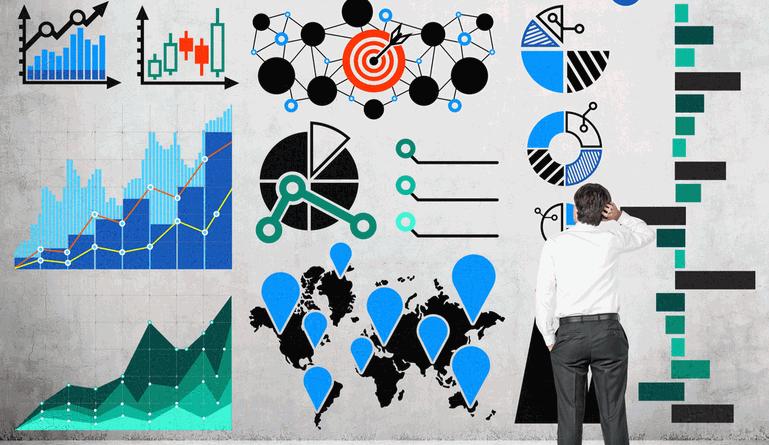Long before big data became cool in technology conversations, a baseball team manager and a Harvard Economics graduate applied Big Data analytics to baseball to create sporting history. The concept was made popular by the movie, Moneyball, which recounts the compelling tale of the resurgence of the cash-strapped Oakland A’s which had just lost its star players to free agency. Billy Beane, the then General Manager for the A’s, and Paul DePodesta, the Assistant General Manager, began analyzing baseball statistics to value and purchase players, which led to the team winning 20 consecutive games between August and September 2002.
The Moneyball theory witnessed rapid adoption across the professional sporting community and laid the foundation of data-driven decision-making. In the world of business, the Moneyball theory has gone on to influence how organizations go about gathering business intelligence. Data-driven decision-making is now commonplace across key business functions including marketing, information technology, finance, and supply chain. Ironically as the one business function that has historically been the custodian of most organizational data, HR has been slow to adopt data-driven, objective decision-making.
However, over the past few years, factors such as digital disruption, increased competition for talent, and changing workforce models have compelled HR leaders to embrace evidence-based decisions that can be linked to key business objectives. As HR’s role evolves to become a strategic business partner to the organization, the value of data and analytics cannot be understated.
The Rise of Predictive Analytics in HR
While data analysis in HR is not exactly a new concept, too often, HR focuses on what has already happened, and in doing so, loses out visibility into what will happen next. Specific insights on what to expect in the future is a tremendous competitive advantage for organizations, and HR can leverage this technology to transform the business impact of the function drastically. Before we go any further, let’s look at what predictive analytics means within the HR context and explore some of its important use cases.
What is Predictive Analytics in HR?
Predictive analytics in HR is defined as the application of data, statistical modeling, and machine learning methods to historical data to identify the likelihood of future outcomes. In other words, predictive analytics helps organizations predict future outcomes of an event. For example, if an HR team wants to determine the rate of attrition for the next two fiscal years, it can leverage predictive analytics to identify the future turnover rate based on historical patterns within existing data. Using these insights, HR can then proactively engage and retain employees and reduce turnover.
With affordable, easy-to-use software becoming available, HR teams now can turn historic workforce data into a competitive advantage. As the predictive analytics vendor ecosystem matures, organizations no longer need to rely on statisticians and mathematicians to use and understand how predictive HR analytics software functions. Predictive analytics software enables HR professionals to gather real-time insights into the efficiency of current HR processes and policies, how employees interact with their work and its business impact, future recruitment needs and the best course of action, and ultimately deliver an exceptional, personalized employee experience.
3 Examples of Predictive Analytics in HR
In response to the developments in predictive analytics technology, HR teams have begun leveraging it to drive continuous improvement and build a predictable talent pipeline. Here are a few innovative ways that organizations have successfully deployed predictive analytics in HR:
1. How Credit Suisse Used Predictive HR Analytics to Reduce Employee Turnover
The investment banking major, Credit Suisse, deployed predictive analytics to identify employee churn and determine the reasons behind employees wanting to quit. This information was anonymously shared with line managers to help them reduce turnover risk factors and retain their talent better.
Based on these insights, Credit Suisse also provided special managers with training on retaining high-performing employees who were likely to give notice. The bank saved an estimated $70,000,000 a year in recruiting and onboarding costs as a result of this initiative.
2. How AMC Theatres Leveraged the Promise of Predictive Analytics to Hire Better
In customer service, your employees are the face of your brand and AMC Theatres has recognized this. The company used workforce analytics and employee profiling to identify the core traits of high-performing customer-service representatives and re-calibrated their hiring process to predict successful candidates. This resulted in reduced turnover rates, higher employee engagement, and better client satisfaction.
3. How E.ON Reduced Employee Absenteeism with Predictive Analytics
Absenteeism in this German energy company had risen above the benchmark, so, the company used predictive analytics to formulate 55 hypotheses to uncover the reason behind absenteeism, out of which they tested 21 and validated 11. The result: The company discovered that a lack of a long holiday in the year increased absenteeism and shared this insight with managers to improve PTO policies.
These are only a handful of examples of predictive analytics at play within the HR function. And as these examples demonstrate, HR departments can potentially save (or earn) significant costs associated with talent management by predicting and influencing the impact of HR policies and processes on employees and the business.




